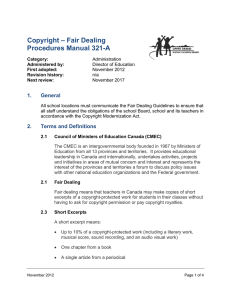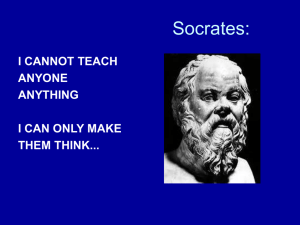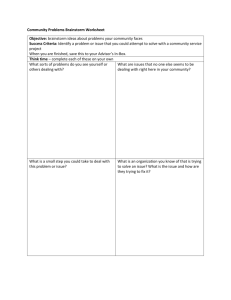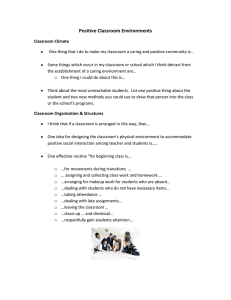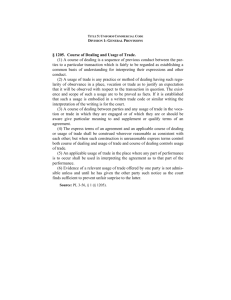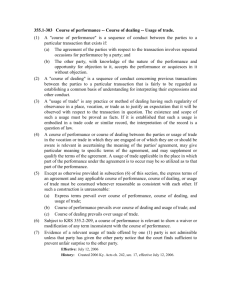Document 12031291
advertisement
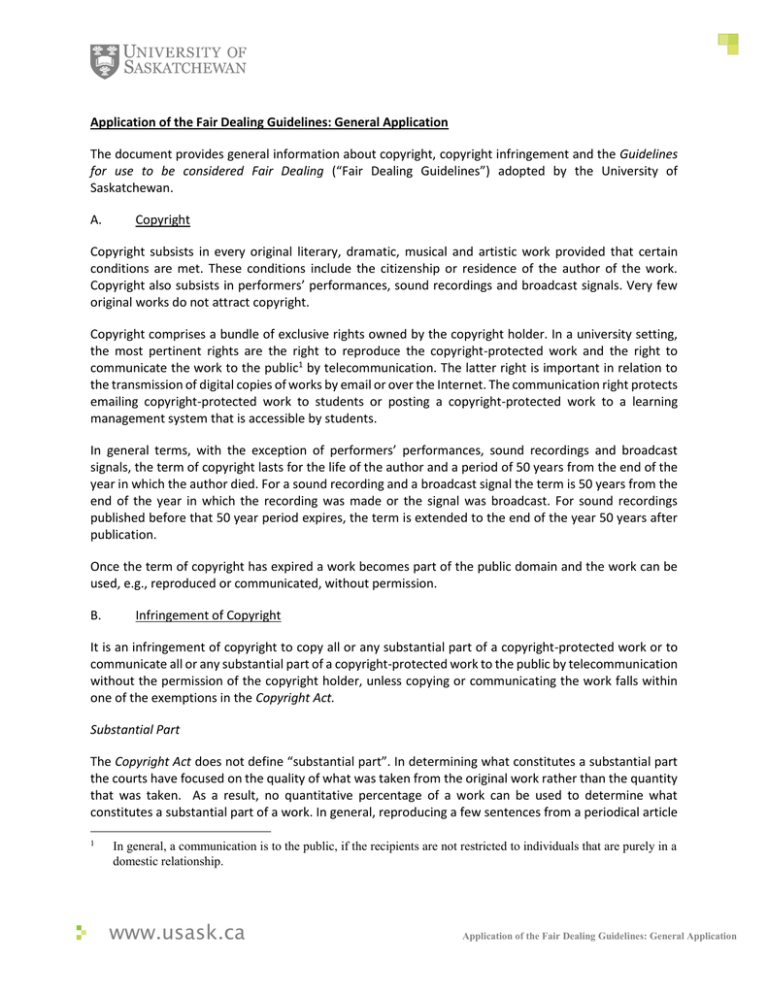
Application of the Fair Dealing Guidelines: General Application The document provides general information about copyright, copyright infringement and the Guidelines for use to be considered Fair Dealing (“Fair Dealing Guidelines”) adopted by the University of Saskatchewan. A. Copyright Copyright subsists in every original literary, dramatic, musical and artistic work provided that certain conditions are met. These conditions include the citizenship or residence of the author of the work. Copyright also subsists in performers’ performances, sound recordings and broadcast signals. Very few original works do not attract copyright. Copyright comprises a bundle of exclusive rights owned by the copyright holder. In a university setting, the most pertinent rights are the right to reproduce the copyright-protected work and the right to communicate the work to the public1 by telecommunication. The latter right is important in relation to the transmission of digital copies of works by email or over the Internet. The communication right protects emailing copyright-protected work to students or posting a copyright-protected work to a learning management system that is accessible by students. In general terms, with the exception of performers’ performances, sound recordings and broadcast signals, the term of copyright lasts for the life of the author and a period of 50 years from the end of the year in which the author died. For a sound recording and a broadcast signal the term is 50 years from the end of the year in which the recording was made or the signal was broadcast. For sound recordings published before that 50 year period expires, the term is extended to the end of the year 50 years after publication. Once the term of copyright has expired a work becomes part of the public domain and the work can be used, e.g., reproduced or communicated, without permission. B. Infringement of Copyright It is an infringement of copyright to copy all or any substantial part of a copyright-protected work or to communicate all or any substantial part of a copyright-protected work to the public by telecommunication without the permission of the copyright holder, unless copying or communicating the work falls within one of the exemptions in the Copyright Act. Substantial Part The Copyright Act does not define “substantial part”. In determining what constitutes a substantial part the courts have focused on the quality of what was taken from the original work rather than the quantity that was taken. As a result, no quantitative percentage of a work can be used to determine what constitutes a substantial part of a work. In general, reproducing a few sentences from a periodical article 1 In general, a communication is to the public, if the recipients are not restricted to individuals that are purely in a domestic relationship. www.usask.ca Application of the Fair Dealing Guidelines: General Application or book as a quotation is not a reproduction of a substantial part of the work. It is not an infringement of copyright if only an insubstantial part of a copyright-protected work is reproduced or communicated, e.g. in a thesis or periodical article. C. Digital Licences The university has entered into numerous licence agreements with publishers and aggregators pursuant to which it obtains access to published works in electronic form. The digital licences typically specify the uses that the university can make of the works to which access is provided. In some instances a copyrightprotected work is made available to the university under a licence with a publisher or aggregator that prohibits certain uses of the work, e.g., prohibits the copying of the work for inclusion in a course pack. Any copying and/or distribution restrictions contained in a licence that permits access to a copyrightprotected work will take precedence over the Fair Dealing Guidelines. Before using the Fair Dealing Guidelines to copy or communicate a short excerpt of a copyright-protected work that is subject to a digital licence, it is necessary to ensure that the use is not prohibited by the licence. You can obtain information about the restrictions imposed on copyright-protected works that are made available under digital licences here: http://libguides.usask.ca/copyright. D. The Fair Dealing Exemption The fair dealing exemption in the Copyright Act provides that fair dealing with a copyright-protected work for one of the following eight purposes: research, private study, criticism, review, news reporting, education, satire, or parody, does not infringe copyright. Any fair dealing for the purpose of news reporting, criticism or review must however mention the source and, if given in the source, the name of the author or creator of the work. To fall within the fair dealing exemption, a dealing, e.g., copying or communicating a work, must be for one of the eight purposes and also must be fair. The Supreme Court of Canada has considered the following factors in determining whether a dealing is fair: (a) the purpose of the proposed copying, including whether it is for research, private study, review, criticism or news reporting; (b) the character of the proposed copying, including whether it involves single or multiple copies, and whether the copy is destroyed after it is used for its specific intended purpose; (c) the amount or proportion of the work which is proposed to be copied and the importance of that work; (d) alternatives to copying the work, including whether there is a non-copyrighted equivalent available; (e) the nature of the work, including whether it is published or unpublished; and (f) the effect of the copying on the work, including whether the copy will compete with the commercial market of the original work. Application of the Fair Dealing Guidelines: General Application 2 This document and the related documents that discuss the Fair Dealing Guidelines provide guidance on how the fair dealing exemption would apply. These documents discuss the application of the exemption in particular contexts. They do not however address all of the circumstances in which the fair dealing exemption can be applied. E. Other Exemptions In addition to fair dealing, the Copyright Act includes a number of other exemptions from infringement of copyright. These include reproducing a work to display it in a classroom, reproducing a work in a test or examination, performing sound recordings or audiovisual works in a classroom, copying and communicating works made available through the Internet, time-shifting and reproducing a work for private purposes. A discussion of these additional exemptions and the conditions applicable to these exemptions is beyond the scope of this document except for the exemption for copying and communicating works made available through the Internet which is discussed below. For more information about the other exemptions contact the Copyright Coordinator at copyright.coordinator@usask.ca. With respect to audiovisual works you can find additional information in the document Application of the Fair Dealing Guidelines for Universities to Audiovisual works that can be found here: http://www.usask.ca/copyright/basics/copyright-policy/fair-dealingguidelines/index.php. F. The Fair Dealing Guidelines The university has adopted the Fair Dealing Guidelines to provide guidance to faculty members, instructors and staff members on when copying and communicating a copyright-protected work would fall within the fair dealing exemption. The Guidelines permits faculty members, instructors, and staff members to copy and communicate, in paper or electronic form, short excerpts from copyright-protected works for any of the eight fair dealing purposes. The most important purposes for the university are research, private study and education. Section 3 of the Fair Dealing Guidelines defines a short excerpt as follows: 3. A short excerpt means: (a) up to 10% of a copyright-protected work (including a literary work, musical score, sound recording, and an audiovisual work) (b) one chapter from a book (c) a single article from a periodical (d) an entire artistic work (including a painting, print, photograph, diagram, drawing, map, chart, and plan) from a copyright-protected work containing other artistic works (e) an entire newspaper article or page Application of the Fair Dealing Guidelines: General Application 3 (f) an entire single poem or musical score from a copyright-protected work containing other poems or musical scores (g) an entire entry from an encyclopedia, annotated bibliography, dictionary or similar reference work provided that in each case, no more of the work is copied than is required in order to achieve the allowable purpose. When considering copying or communicating a short excerpt under the Fair Dealing Guidelines, the most advantageous of sections 4(a) through (g) may be selected. For example, if one chapter of a book is more than 10% of the book, the one chapter may be copied under the Fair Dealing Guidelines. If more than one figure is selected for copying, the number of figures selected that may be copied under the Fair Dealing Guidelines cannot exceed 10% of the book. For example, if a book is 200 pages long, up to 20 pages may be copied under the Fair Dealing Guidelines. The Fair Dealing Guidelines does not apply to students except to the extent that a student is an employee of the university, e.g. as a teaching assistant or instructor. The Guidelines might however provide a general guidance on how the fair dealing exemption can be applied. For further information, students can refer to the document Fair Dealing Guidance for Students that can be found here: http://www.usask.ca/copyright/basics/copyright-policy/fair-dealing-guidelines/index.php . Depending on the circumstances, copying or communicating a copyright-protected work outside the Fair Dealing Guidelines may be permitted under the fair dealing exemption in the Copyright Act. To determine whether copying or communicating a work outside of the Fair Dealing Guidelines falls within the exemption contact the Copyright Coordinator at copyright.coordinator@usask.ca or 306-966-8817. G. Permission If copying or communicating a copyright-protected work is outside the Fair Dealing Guidelines and does not fall within one of the exemptions in the Copyright Act, permission of the holder of copyright must be secured. Permission may be obtained directly from the holder of copyright or his or her representative. The Copyright Clearance Center, a U.S. non-profit organization, provides transactional permission in respect of a very large repertoire of copyright-protected works on behalf of copyright holders. The Copyright Coordinator can assist in obtaining the necessary permissions. It is advisable to seek written permission to copy or communicate a copyright-protected work outside the Fair Dealing Guidelines and to retain a copy of the written permission in the event that copying or communicating the work is ever challenged. H. Exemption for Works Available through the Internet Section 30.04(1) of the Copyright Act provides an exemption from copyright infringement for copying, communicating and performing in public by an educational institution or a person acting under the authority of one, e.g., a faculty member or administrative staff, for educational or training purposes of a Application of the Fair Dealing Guidelines: General Application 4 copyright-protected work that is available through the Internet. The exemption is however subject to a number of conditions that must be met before the exemption applies. The conditions are as follows: 1. The educational institution, or person acting under its authority mentions the source, e.g., through a URL, and if given the source, the name of the author, in the case of a work, the name of the performer, in the case of a performer’s performance and the name of the record label in the case of a sound recording; 2. The copyright-protected work or the Internet site where it is posted is not protected by a digital lock (also known as a technical protection measures or TPM) that either restricts access to the work or restricts copying, communicating or performing in public the work; 3. There is no clearly visible notice other than a copyright symbol posted on the Internet site or on the work, prohibiting the act sought to be done; and 4. The educational institution or person acting under its authority did not know or should not have known that the work was made available through the Internet without the consent of the copyright holder. Using the exemption under section 30.04(1) is preferable to copying or communicating a copyrightprotected work under the Fair Dealing Guidelines because the entire work may be copied or communicated under section 30.04(1). A faculty member or administrative staff must however be satisfied that each of the conditions is met before using the exemption. I. Digital Locks Some copyright holders use digital locks to restrict access to copyright-protected works and/or to limit the use that can be made of such works. The Copyright Act now prohibits the circumvention of digital locks to obtain access to copyright-protected works. The Fair Dealing Guidelines does not permit the circumvention of digital locks to obtain access to copyright-protected works. In order to circumvent a digital lock it is necessary to obtain the permission of the copyright holder. Application of the Fair Dealing Guidelines: General Application 5
